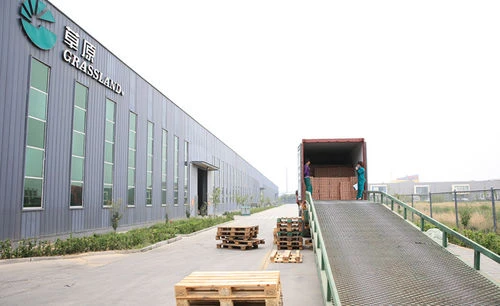Current location:aluminum on grinding wheel >>Text
aluminum on grinding wheel
disc for cutting stone2People have read
IntroductionTypes of Abrasives Used in Grinding Grinding is a crucial manufacturing process that involves the us...

Types of Abrasives Used in Grinding Grinding is a crucial manufacturing process that involves the use of abrasives to refine surfaces and attain desired finishes on various materials. Abrasives are materials that are hard enough to wear away the surface of another material through friction. The selection of the appropriate type of abrasive plays a vital role in determining the effectiveness and efficiency of the grinding operation. In this article, we will explore the various types of abrasives commonly used in grinding processes. 1. Natural Abrasives Natural abrasives are derived from minerals found in nature and have been used for centuries. Some of the most common natural abrasives include - Sand One of the most widely used natural abrasives, typically found in various grits and used for blasting and smoothing surfaces. - Almandine Garnet A hard stone often utilized in waterjet cutting and sandblasting due to its excellent cutting ability and minimal dust production. - Pumice This volcanic rock is used for polishing and finishing applications, particularly on soft materials. Natural abrasives are eco-friendly and can be economically sourced, although their performance may not always match that of synthetic options. 2. Synthetic Abrasives Synthetic abrasives have been developed to meet specific performance standards and are favored in many modern grinding applications. They are engineered to provide consistency, durability, and efficiency . Key types of synthetic abrasives include - Aluminum Oxide (Alumina) Known for its high hardness and strength, aluminum oxide is one of the most common synthetic abrasives. It is versatile and can be used for grinding metals, wood, and plastics. - Silicon Carbide This abrasive is harder than aluminum oxide and is ideal for grinding non-ferrous metals, ceramics, and glass. It delivers excellent cutting performance and is commonly used in blade and wheel production. - Zirconia Alumina Recognized for its durability and long life, zirconia alumina is primarily used in heavy grinding applications. Its ability to withstand heat makes it suitable for high-performance tasks such as metal fabrication. types of abrasives used in grinding 3. Speciality Abrasives Aside from the common types mentioned above, the industry also utilizes specialty abrasives designed for specific applications - Diamond Abrasives These abrasives are the hardest known material and are perfect for precision grinding of hard materials such as ceramics, glass, and composites. They are commonly used in tooling and cutting applications. - Cubic Boron Nitride (CBN) Second only to diamond in hardness, CBN is primarily used for grinding hardened steel and is favored in industrial applications for its ability to maintain sharp edges and reduce grinding heat. 4. Bonding Agents The effectiveness of abrasive materials is often enhanced through the use of bonding agents, which bind the abrasives together to form grinding wheels. There are several types of bonding agents used - Vitrified Bond This ceramic bond withstands high temperatures and is resistant to wear, making it suitable for high-speed applications. - Resin Bond Offering flexibility and shock resistance, resin bonds are favored for producing grinding wheels that operate at lower speeds. - Metal Bond Used in diamond and CBN wheels, metal bonds provide excellent stability and are ideal for heavy-duty grinding where rigidity is essential. 5. Conclusion The choice of abrasives in grinding processes significantly influences the efficiency, speed, and quality of the final product. With a variety of natural and synthetic options available, manufacturers must select the appropriate type based on factors such as the material being ground, the desired finish, and specific operational requirements. As technology advances, the development of new abrasive materials continues to enhance grinding performance, optimizing manufacturing processes across various industries. Understanding the types of abrasives and their applications enables better decision-making for improved productivity and product quality.
Tags:
Latest articles
Selecting the Best Grinding Wheel for Effective Hardened Steel Sharpening and Finishing
aluminum on grinding wheelGrinding Wheels for Hardened Steel A Comprehensive Guide When it comes to machining hardened steel,...
Read More
Unleashing the Power of the Metal Cutting Disc_ Uses, Types, and Versatility
aluminum on grinding wheelWhen it comes to working with metals, the metal cutting disc is an indispensable tool for achieving...
Read More
SAFETY GUIDE FOR RESIN BONDED GRINDING WHEELS
aluminum on grinding wheelSAFETY GUIDE Grinding Wheels improperly used are DANGEROUS. Be sure that all users should familiariz...
Read More
Popular articles
- 9-inch Concrete Grinding Disc for Efficient Surface Preparation and Polishing
- disco de corte 4 1 2 para acero inoxidable
- Types of Flap Discs for Various Applications and Material Finishing Techniques
- T27 4-1_2 In. 100 Grit Aluminiumoxid Klappe Scheibenrad
- High-Performance 9-Inch Cutting Discs for Efficient Metalworking and Fabrication
- Aluminum Oxide Flap Wheel for Efficient Finishing and Polishing Applications
Latest articles
-
Flap Sanding Discs for Grinders – Enhance Your Metalworking Efficiency and Finish Quality
-
grinding wheel sharpening stone
-
High-Performance Metal Sanding Discs for Angle Grinders and Their Uses
-
Angle Grinder Rust Removal Discs for Effective Surface Preparation
-
4-дюймовы шампуры з губкай для шліфавання і іх прымяненне
-
6-inch stone cutting disc for precision cutting and durability in stone projects